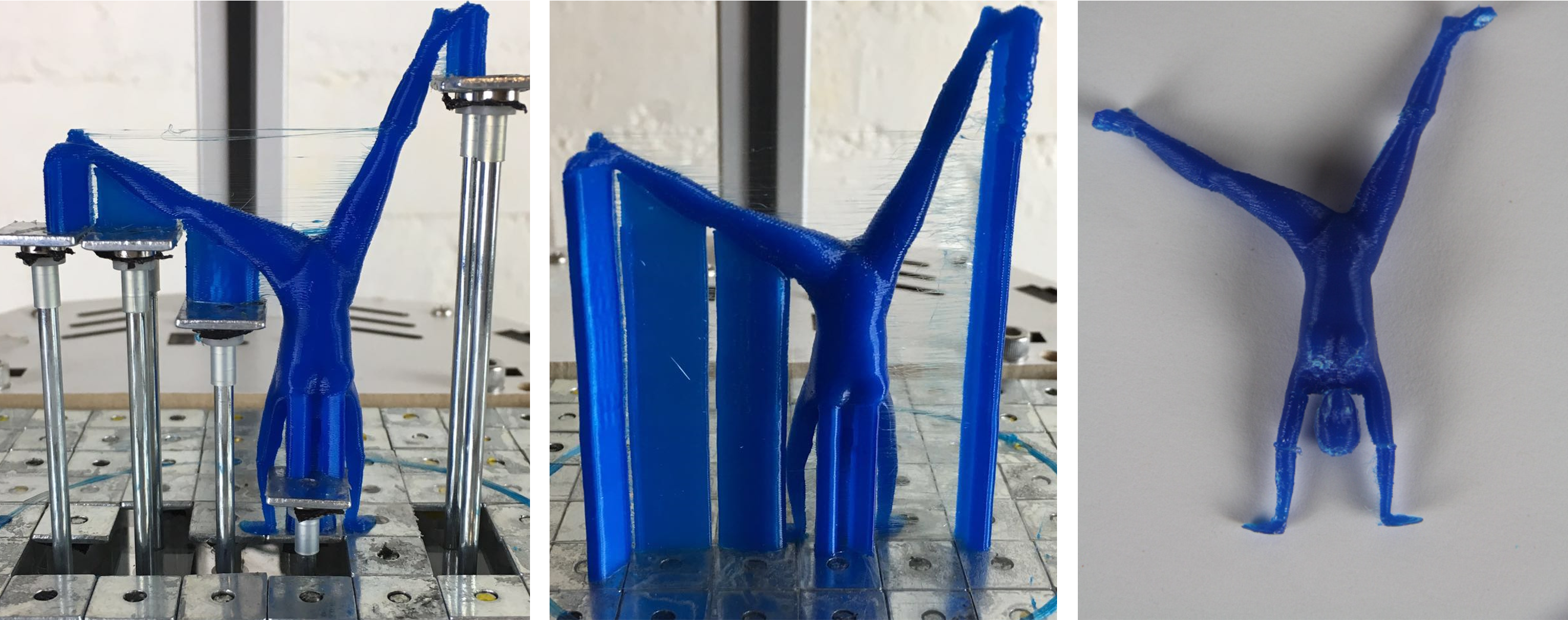Researchers from the USC Viterbi School of Engineering have produced a dynamically controlled surface for 3D printers with a reusable support. Each support runs from a single motor, moving a platform that raises groups of metal pins simultaneously. A prototype was shown to reduce waste and cut the costs involved in 3D printing, and could easily be adapted for large-scale manufacturing in the automotive and aerospace industries, for medical implants and dental products, as well as custom components for consumer products.
Conventional 3D printing mostly uses a fused deposition modeling (FDM) approach to print directly onto a static metal surface layer by layer, which is time-consuming and produces large amounts of expensive and unsustainable waste, a barrier to wider implementation. In many instances the printing of supports is required, stands that hold the object in place as the printer produces each layer, working to maintain its shape integrity. These have then to be manually removed after printing, which can introduce shape inaccuracies and surface roughness, and tend to be thrown away after use.
However, as reported in Additive Manufacturing [Xu et al. Addit. Manuf. (2021) DOI: 10.1016/j.addma.2021.101840], this new technique is based on a programmable, dynamically-controlled surface made of moveable metal pins instead of supports, where the pins rise up as the printer progressively builds the product. A prototype system with 99 pins was demonstrated, with each pin being able to be raised up to different heights. They can be reused for different shapes and materials, and extra pins can be inserted using the same hardware. Testing demonstrated it could save around 40% in materials used to print objects, such as biomaterials to build tissue or organs.
Software informs where a series of metal tubes should be added into the base of the platform, the location of which determines which pins should be raised to defined heights. Once the printing is complete, the pins can be easily removed without damaging the product. As team leader Yong Chen told Materials Today, “The new reusable support method has been demonstrated using the fused filament fabrication process. We hope our work will inspire more reusable support methods to address the support generation issues in the future.”
Having demonstrated the viability of the reusable support for FDM, the team now hopes to extend the method to other 3D printing processes, such as the vat photopolymerization and selective laser melting processes, which have similar support generation issues but different requirements.



